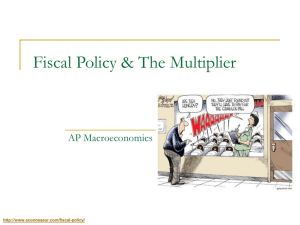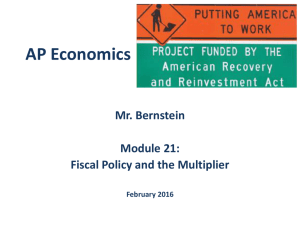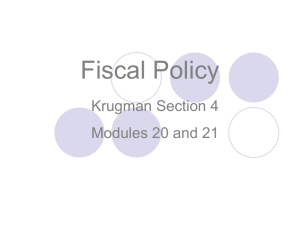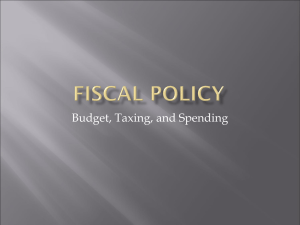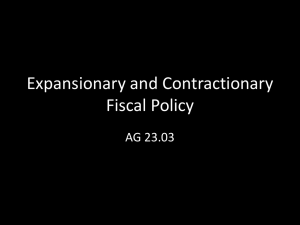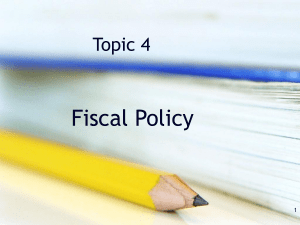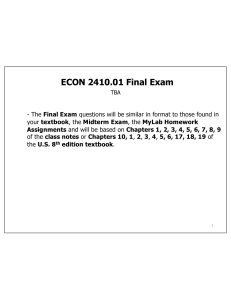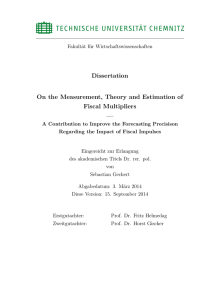Fiscal Policy and the Multiplier Module 21 April 2015
advertisement
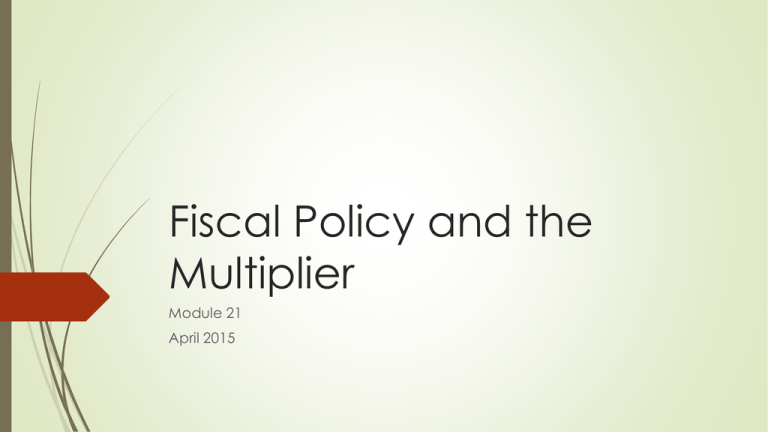
Fiscal Policy and the Multiplier Module 21 April 2015 Expansionary and Contractionary An expansionary fiscal policy, like the American Recovery and Reinvestment Act pushed the aggregate demand curve to the right A contractionary fiscal policy, like Johnson’s tax surcharge, pushes the aggregate demand curve to the left This module discusses HOW MUCH it shifts and that is determined by the multiplier 1/(1-MPC) is the general multiplier – with MPC meaning marginal propensity to consume If the marginal propensity to consume is 0.5, the multiplier is 1/(1-.05) = 1/0.5 = 2. Given a multiplier of 2, a $50 billion increase in government purchases of goods and services would result in a real GDP of $100 billion. $50 billion is the initial effect and $50 billion is the subsequent effect. Same same if the gov spends less, the multiplier would then be negative Vocabulary Lump-sum taxes – taxes that don’t depend on the taxpayer’s income – this is rare Automatic stabilizers – government spending and taxation rules that cause fiscal policy to be automatically expansionary when the economy contracts and automatically contractionary when the economy expands Transfer payments fall under that automatic category – unemployment benefits increase in a contractionary economy and decrease in an expansionary one Discretionary fiscal policy – fiscal policy that is the result of deliberate actions by policy makers rather than rules. Table 21.1 Hypothetical Effects of a Fiscal Policy with a Multiplier of 2 Ray and Anderson: Krugman’s Macroeconomics for AP, First Edition Copyright © 2011 by Worth Publishers 1. The MPC I. has a negative relationship to the multiplier II. Is equal to 1 III. Represents the proportion of consumers’ disposable income that is spent a. I only b. II only c. III only d. I and III only e. I, II, and III only 2. Assume that taxes and interest rates remain unchanged when government spending increases and that both savings and consumer spending increase when income increases. The ultimate effect on real GDP of $100 million increase in government purchases of goods and services will be: a. An increase of $100 million b. An increase of more than $100 million c. An increase of less than $100 million d. An increase of either more than or less than $100 million depending on the MPC e. A decrease of $100 milllion


